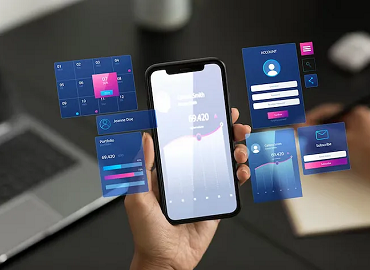How to Develop a mobile app in 6 steps
By Jessica Williams
Developing a mobile app involves several steps, from conceptualization to deployment. Here’s a simplified guide outlining six key steps in the app development process:
Define Your Idea and Goals:
- Start by clearly defining your app idea and its purpose. Identify the problem it solves or the need it fulfills.
- Define your target audience and understand their preferences and behaviors.
- Set specific goals for your app, such as user engagement metrics, revenue targets, or downloads.
Wireframing and Design:
- Create wireframes or sketches to visualize the layout and structure of your app. This step helps in planning the user experience (UX) and user interface (UI) design.
- Design the UI elements, including icons, buttons, and navigation menus, keeping in mind your target audience and usability principles.
- Use design tools like Adobe XD, Sketch, or Figma to create mockups and prototypes for testing.
Development:
- Choose the appropriate technology stack based on your app requirements (e.g., native, hybrid, or cross-platform development).
- Write code for the frontend (client-side) and backend (server-side) components of your app.
- Implement features such as user authentication, data storage, in-app purchases, and third-party integrations.
- Test your app continuously during the development process to identify and fix bugs early.
Testing and Quality Assurance:
- Conduct various types of testing, including functional testing, usability testing, performance testing, and security testing.
- Test your app on different devices, operating systems, and screen sizes to ensure compatibility.
- Gather feedback from beta testers or focus groups to identify areas for improvement.
Deployment and Launch:
- Prepare your app for deployment by optimizing its performance, security, and compatibility.
- Create developer accounts on app stores like Apple App Store and Google Play Store.
- Submit your app for review, adhering to the guidelines and requirements of the app stores.
- Once approved, launch your app and promote it through various channels to reach your target audience.
Maintenance and Updates:
- Monitor user feedback and app performance post-launch to identify issues and areas for enhancement.
- Regularly update your app with new features, bug fixes, and security patches to keep it relevant and reliable.
- Continuously optimize your app based on user analytics and market trends to maintain user engagement and satisfaction.
Conclusion:
Mobile app development involves a series of interconnected steps that require careful planning, execution, and iteration. By following the six key steps outlined above — defining your idea and goals, wireframing and design, development, testing and quality assurance, deployment and launch, and maintenance and updates — you can create a successful mobile app that meets the needs of your target audience.
Throughout the process, it’s essential to prioritize user experience, quality, and ongoing optimization to ensure your app remains relevant and competitive in the ever-evolving mobile landscape. Additionally, maintaining open communication and collaboration among team members, stakeholders, and users is crucial for gathering feedback, addressing issues, and making informed decisions at each stage of development.

